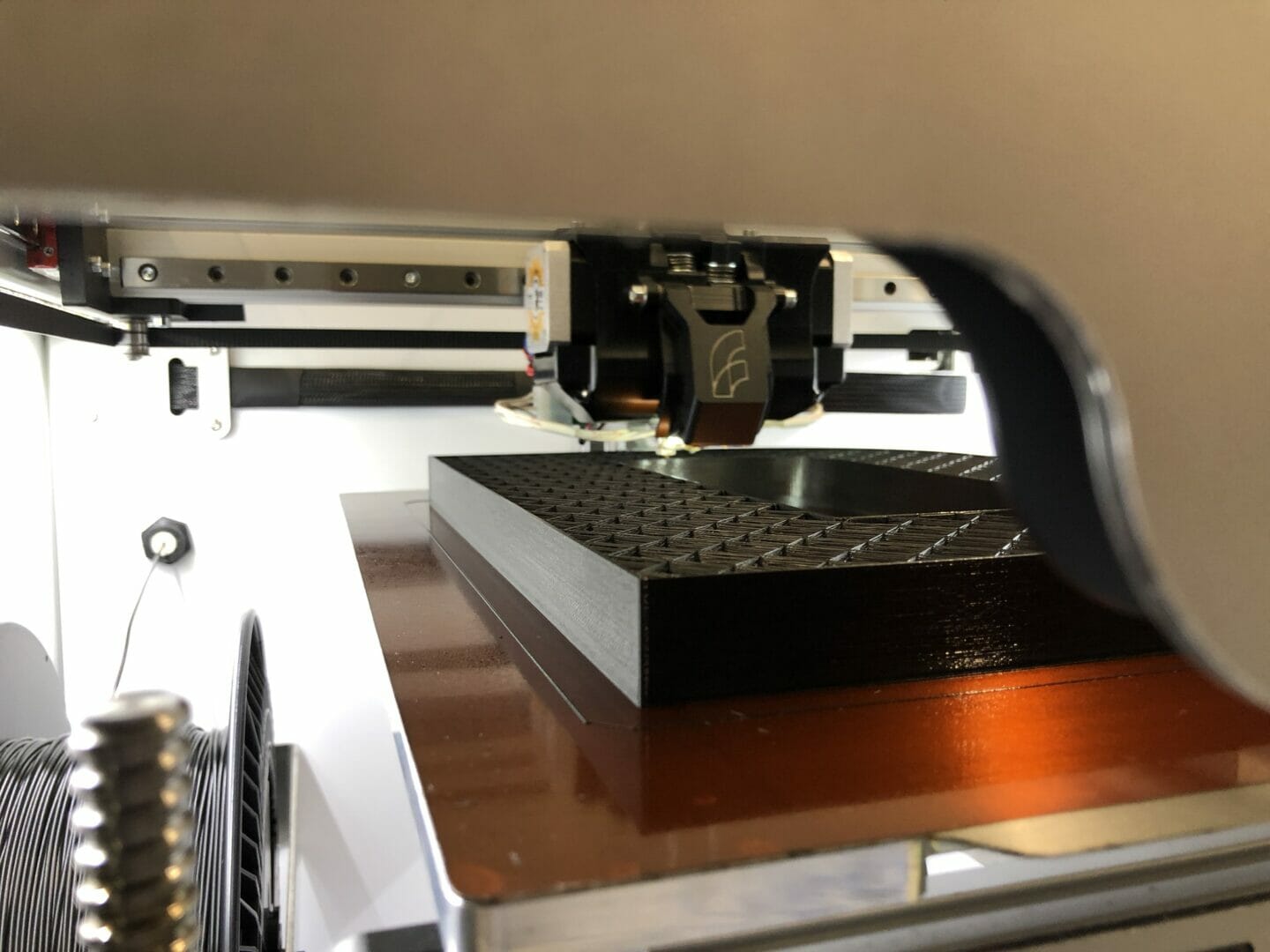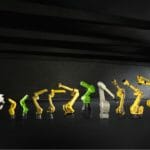Houdijk, based in Vlaardingen in the Netherlands, develops and delivers advanced, automated food handling systems for a wide spectrum of global clients. With a history spanning almost 100 years, the family-run company has grown significantly in both size and reputation. Today, Houdijk utilises advanced industrial 3D printers from FELIXprinters for a range of applications across its extensive facilities for both new product development and various manufacturing disciplines.
(September 16th 2019; IJsselstein, The Netherlands): FELIXprinters continues to expand its reach into a range of manufacturing sectors thanks to its reputation for developing and supplying highly accurate, reliable, easy-to-use, and price sensitive industrial additive manufacturing (AM) systems.
This latest case study highlights the value and capabilities of the FELIXprinters range in the food manufacturing sector, and the use of FELIXprinters’ AM platforms by food handling equipment specialist Houdijk. Also based in the Netherlands, Houdijk specifically designs and assembles advanced handling systems for fully automated movement and loading of all kinds of cookies, biscuits and crackers.
According to Gosling Putto, R&D Manager at Houdijk: “We are globally recognized for our high volume biscuit, cookie, and cracker handling systems. This is shown by our client list, which includes multinational companies such as Mondelez, PepsiCo, Nestle, and Ferrero, for which we develop and provide installations that operate and handle food between the oven and the packaging machines. Our solutions can include multiple functions on top of the actual movement of the product, including specific distribution and feeding, counting, and inspection across the product flow, which can accommodate up to 23,000 products per minute.”
Putto continues, “In addition, and put simply, product has to go from point A to point B — the less it is handled, the higher its quality will be. This latter fact is fundamental to our philosophy and approach to developing handling systems. We strive not for complexity, but to make systems that simply do the job: that is, feed your product efficiently and effectively to the next link in your operational process.”
However, customer requirements for variations in functionality also necessarily drive innovation at Houdijk. For each handling system, the nature of the product itself needs to be taken into consideration, since every cookie, biscuit, or cracker will have different dimensions and different characteristics (sticky, brittle, greasy, dry, with chocolate chips, enrobed, etc.).
Therefore, for each system, the development team at Houdijk needs to test many separate and different functionalities to supply the best solution. Putto explains how 3D printers, specifically FELIXprinters platforms, enables this. “We use our 3D printers to make customized prototypes for the systems we are developing specifically for our clients. It can take many iterations to achieve an optimised shape and finish to handle a specific product, including some really complex geometries that keep the overall system as simple as possible.”
When it came to supplier selection, Houdijk invested in a number of FELIX 3D printing solutions — two Pro 3s and a Pro L (which is able to manufacture considerably larger parts. According to Putto, it was FELIXprinters’ commitment to high grade components that ensure greater reliability and accuracy for the user that stood out, particularly when compared with other suppliers in the same price range. In addition, word of mouth also played a part, as one of the Houdijk team had a FELIX TEC system at home, that performed extremely well.
Putto expanded on how Houdijk utilizes the different FELIXprinters systems. “The two Pro 3s are excellent for quickly producing small parts for faster iteration and optimizing a design. They produce our parts with levels of accuracy that have exceeded our expectations, especially with the high level of fine details that we can achieve. They are also very solid machines, and we take them with us when travelling to customers’ facilities to help us better serve them without any transit issues. The Pro 3’s are also intuitive and easy-to-use systems. When it comes to the FELIX Pro L, this is much more of an industrial machine and we specifically use this to produce bigger parts. It is also really useful for us that the Pro L is suitable for printing rubber-like materials.”
“Some of the applications that we use our printers for are proprietary. But there are some examples that I can talk about. For example, we use the printers to print vortex and venturi nozzles. So, if you blow compressed air through these components you create a low air pressure spot which acts like a suction cup. This is the scientific principle we use to efficiently pick up and place the cookies and biscuits. We also 3D print all kinds of brackets, with various geometries. Before we invested in 3D printing, we would have to cut and bend sheet metal to create these parts, which was extremely labour intensive and much more expensive. We are also looking to directly use 3D printing to manufacture support structures to mount other parts on. If very tight fittings are not required and if the parts are not exposed to too much stress we are finding that we can replace a lot of turned and milled parts, which allows us to reduce costs and streamline our processes. And finally, we also produce sliding boards and dribble boards. Our FELIX Pro L allows us to print large channels (around 300 mm long and 40 mm wide) on which cookies slide down from conveyor A to conveyor B while accommodating the height difference. Sometimes we also diverge and converge on these boards.”
Running the FELIXprinters systems is proving to be very cost effective for Houdijk in terms of material consumption, which compares very favorably with alternative FDM 3D printing systems, according to Putto. Moreover, Houdijk has found working with FELIXprinters post-sale has provided the company with a working partner that provides reliable and fast feedback.







